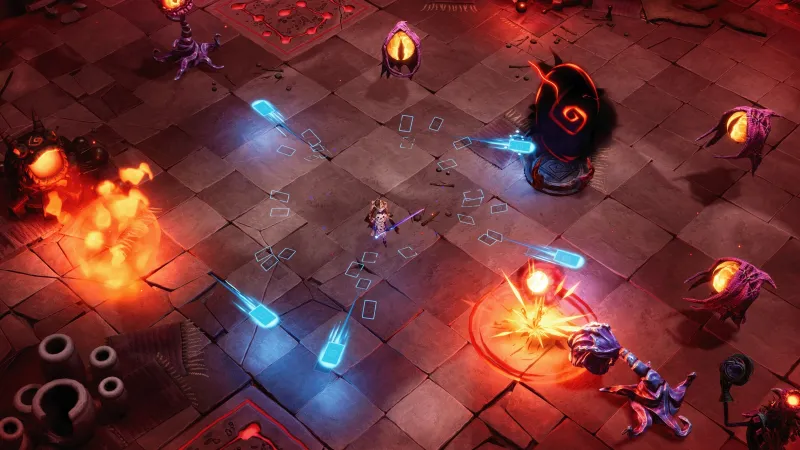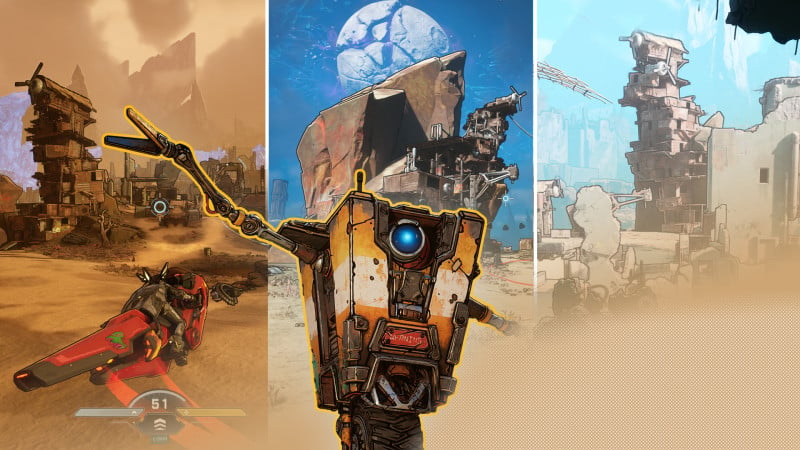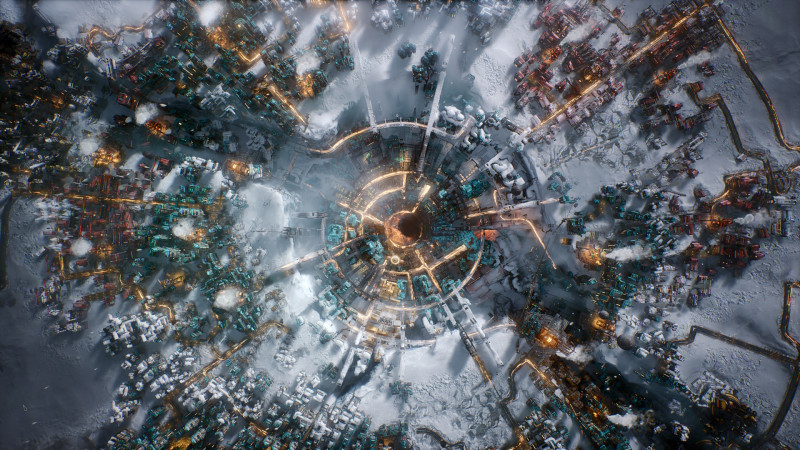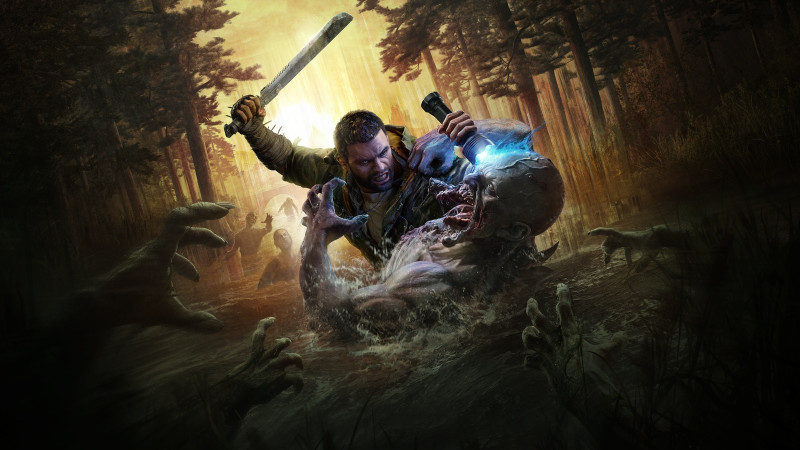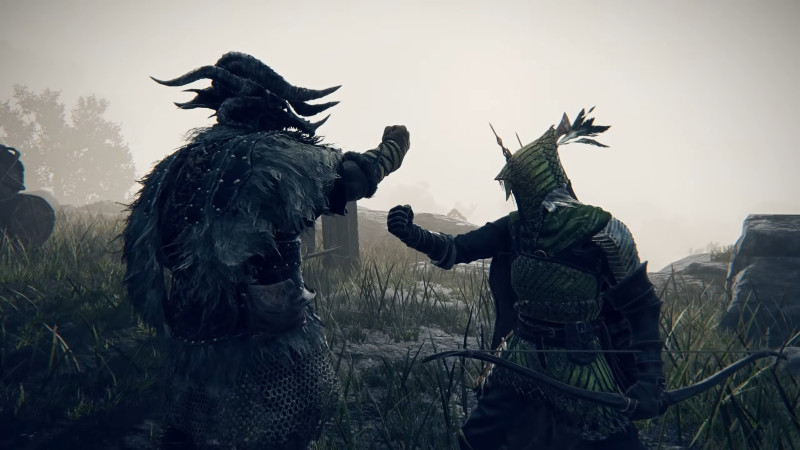The roguelike genre is feeling the Hades effect. The acclaimed action game has now been around long enough for its design ideas to seep into other titles, which isn’t surprising given how strongly the original game and its sequel, currently in Early Access, have been received. What is unexpected is that one of the biggest imitators I’ve seen yet would come in the form of a sequel to 2021’s Lost in Random, a game that is very much not a roguelike. But Lost in Random: The Eternal Die represents a significant change for the series in more ways than one.
Although Zoink developed the first Lost in Random, The Eternal Die is now helmed by Stormteller Games. Whereas the original was closer to a traditional third-person action game with a unique card and dice battling system, Stormteller has taken the franchise in a more action-focused roguelike direction, cut from the cloth of Supergiant Games’ take on Greek myth. While a jarring change for fans of the first game, thematically, it makes sense; the series unfolds in the world of Random, where dice rolls and chance are a way of life. What genre exemplifies this ethos better than the roguelike?
After playing several runs of The Eternal Die over a few hours, I realized that while the game may be derivative in places, it has unique ideas and plays great to boot.
The Eternal Die unfolds after the events of the first game, but Stormteller describes it as a standalone follow-up instead of a direct sequel. Players control a new, though familiar, protagonist: Queen Aleksandra, the main antagonist of the first game. After her defeat, she’s betrayed by the Black Die, namely its true form, a malevolence known as Mare the Knight, who transforms her back into a child. Mare traps Aleksandra within an ever-shifting game, and she embarks on a revenge quest to end Mare and regain her lost power. Aleksandra won’t have to seek vengeance alone; her sentient die companion, Fortune, tags along to aid in her quest.
Like Hades, players will battle through randomized arenas that reward power-ups, health, and different currencies. Dying ends a run and sends you back to a hub called the Sanctuary, where you’ll interact with a colorful and well-acted cast of new and returning faces from the first game. Sometimes they’ll have something new to say, though not nearly with the same frequency as in Hades, making the uneventful return trips feel flat. Bosses await at the end of each biome and spout new dialogue and battle tactics each time you have a rematch with them. Even the font is somewhat similar to Hades’.
Where The Eternal Die nearly matches Hades is how great it feels to play, thanks to its swift, snappy movement and combat. Slaying opponents with a simple three-hit combo while zipping around arenas with a quick dash captures the core of what makes Hades’ combat so satisfying. Players can also toss Fortune at enemies, but you must manually retrieve it, just as in the first game with Even’s pal Dicey.
Players begin with a sword, but can quickly unlock a bow, spear, and hammer. Each weapon sports four small upgrade paths to bestow different properties, from simple damage enhancers to firing wind gusts upon defeating an enemy. Collecting Cinders, one of the game’s different currencies, unlocks these paths. Each weapon feels good, and the choice comes down to preference. I like peppering foes with quick arrows using the bow at a range, though I also found fun in clobbering enemies using the hammer’s deliberate but powerful swings.

Cards still play a critical role in battle, but instead of having a full deck and playing from a hand, you collect and equip one at a time. Each card bestows a special attack. One allows Aleksandra to emit a loud cry that repels and stuns foes. Another fires smaller cards that home in on targets (this particular card’s artwork features Even, the first game’s hero, in a small nod). One fires a lightning attack that ricochets between enemies. The game features 15 cards total, and they operate on a meter replenished by collecting pick-ups called Energy Shards generated from landing melee strikes.
The Eternal Die’s biggest and most unique shake-up is its power-up and progression systems. Players can augment Aleksandra’s abilities by collecting Relics, which function similarly to Boons from Hades. Over 100 exist, and they come in five color-coded categories – Weapon, Card, Dice, Conjurations, and Luck – and are placed on a grid of tiles. The ability is not active on its own; it must be matched with two other Relics of the same color, vertically or horizontally, on the board first. Matching three Relics of the same color unlocks any abilities attached to them and clears them from the board.

Some Relics are dual-colored, so you can use them to match two sets of different color rows. Other Relics contain Pearls, which shatter upon matching to boost the effectiveness of their associated stat. The board has limited open spaces at the start, but adding new Relics expands its borders by unlocking additional tiles. You can also place new tiles on top of active relics to eliminate them if you find a perk you prefer more than what you currently have. Maximizing board space to ensure you unlock Relic perks quickly and neatly becomes a mini-game in itself, and since Relics are randomly doled out after completing certain rooms, you’ll need to be mindful of arranging your board, as you don’t know when, or if, you’ll get the color you need at the right time.
Another form of perks is Blessings, which are permanent passive benefits unlocked by spending Pip Dust, another currency. You can equip several Blessings at once, and perks include raising your maximum HP, making Energy Shards drop when Fortune is thrown at enemies, or resurrecting you once upon death. Each blessing comes in two different forms that can be swapped between. For example, one Blessing replenishes a small amount of health after each encounter, but its alternative version gives a greater health boost whenever you defeat more powerful foes, such as mini-bosses. Spending Pip Dust upgrades Blessings one or more times to become more powerful versions of themselves.
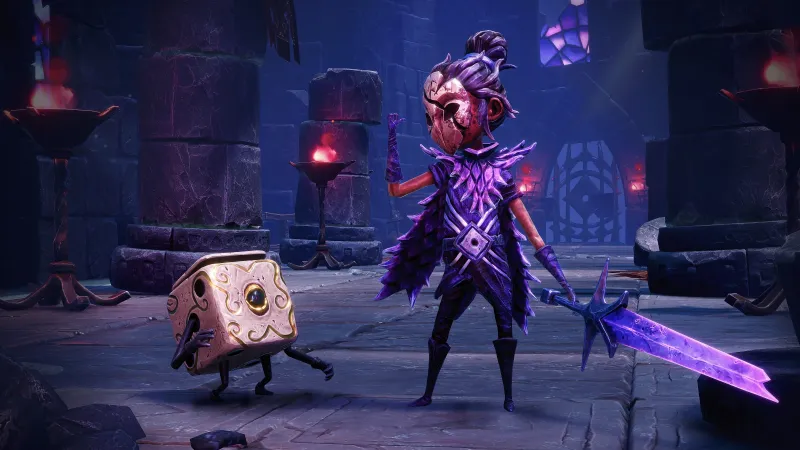
Lost in Random includes nice quality-of-life features that make it a friendlier entry in the genre. The biggest convenience is that you can save and exit the game anytime during a run and pick up exactly where you left off. That means no restarting runs from scratch if you need to stop playing suddenly. Players can also fast-travel to certain previously visited rooms, making it easy to jump around a world if you need to backtrack, which you likely will. While exploring, you can find new characters, including different shop vendors, to flesh out Sanctuary. These allies may offer sidequests, such as reuniting a robot’s head with its body and locating a talking fish’s lost dice friends hidden within a biome.
I’m enjoying Lost in Random: The Eternal Die so far. It plays well, the characters are lively and are wonderfully brought to life by the strong voice acting, and it’s neat to see the game’s dark fantasy art direction from an isometric angle. Despite the strategic depth offered by juggaling Relics, Blessings, and Cards, the experience does feel slim overall compared to the sheer density of content Hades offers. Since the games share a very similar DNA, I believe it’s fair to directly compare them because it’s hard not to think about Supergiant’s series while conquering rooms in The Eternal Die. The question is whether or not the game is truly less than, greater than, or different than what it’s pulling from.
Thankfully, Lost in Random: The Eternal Die’s release isn’t far away. It launches on June 17 for PlayStation 5, Xbox Series X/S, and PC.





